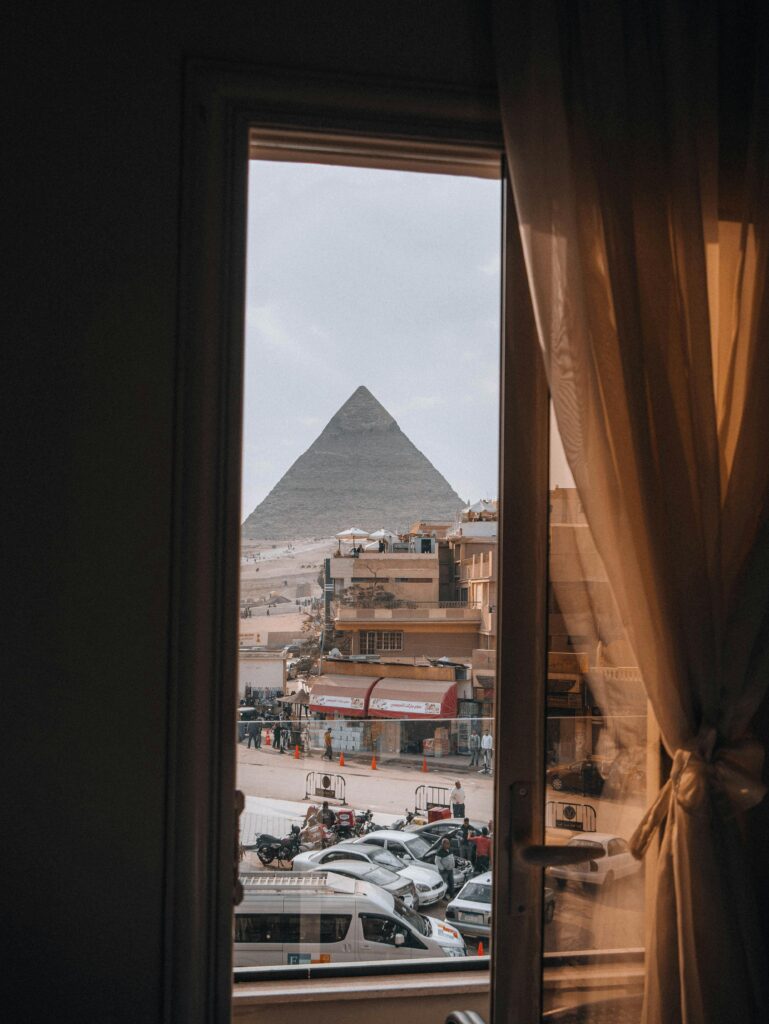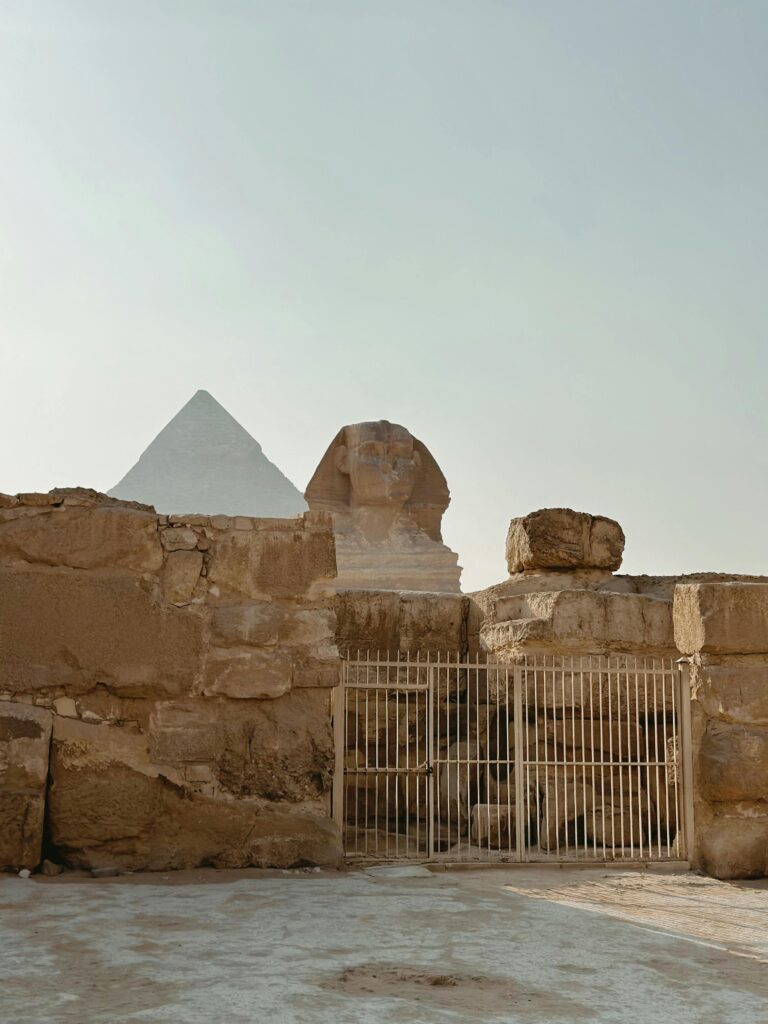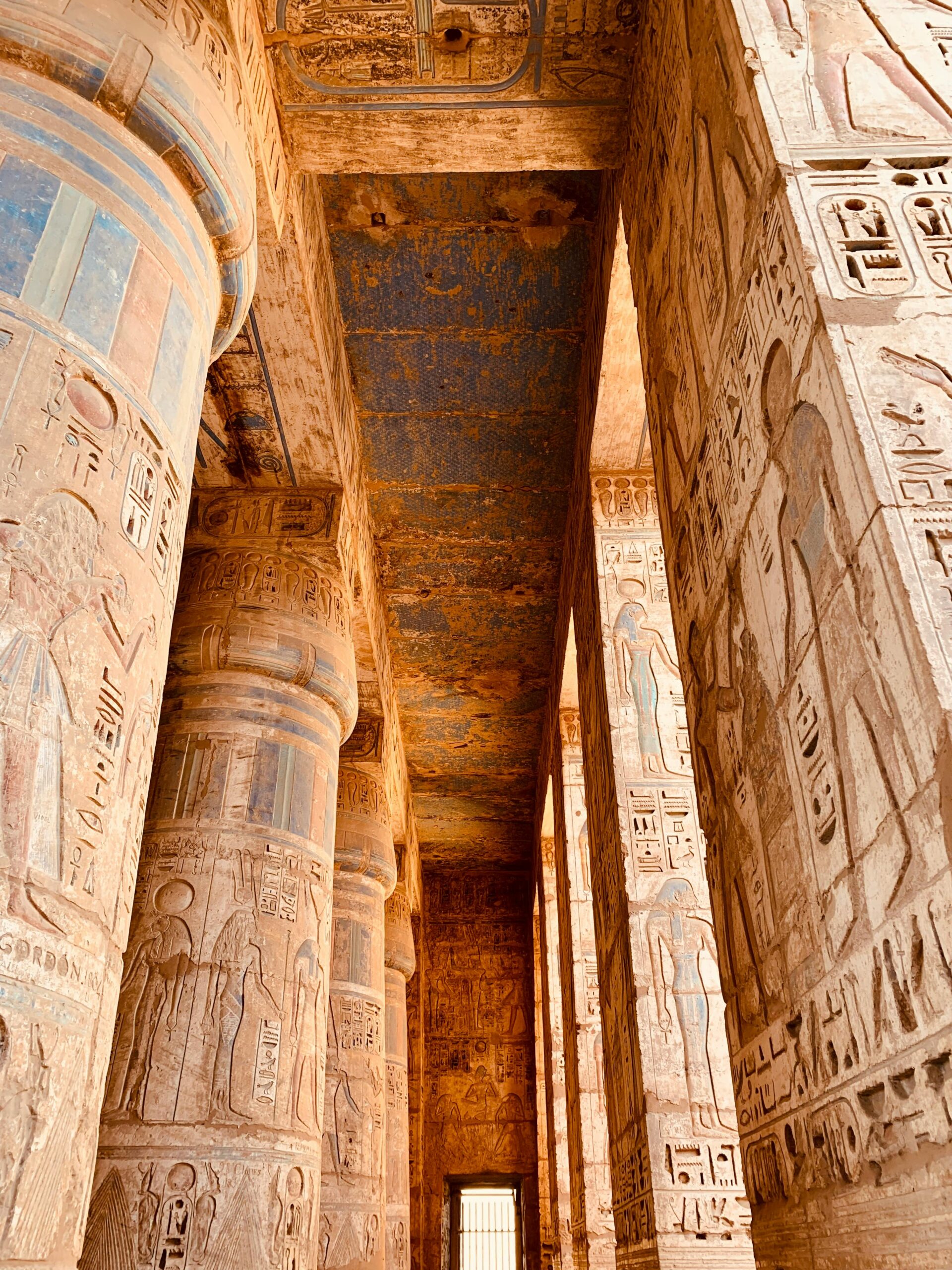The structures built by the ancient Egyptians have become symbols of their civilization’s power and spiritual beliefs. Meanwhile, modern Egyptian architecture is evolving to meet the needs of a rapidly urbanizing population while respecting the country’s rich architectural heritage.
The monumental buildings of ancient Egypt, such as the pyramids and grand temples, continue to influence modern architecture, especially in the ways that buildings reflect religious and cultural values. Ancient Egyptian architecture is recognized for its grandeur, precision, and alignment with the natural world. These ancient structures laid the groundwork for understanding architectural engineering, with their impressive scale and sophisticated construction techniques still studied by architects and engineers today.
This article will explore the evolution of Egyptian architecture, starting with the monumental achievements of the ancient Egyptians and moving through the Islamic influence, colonial-era changes, and modern innovations. It will provide a deep dive into the key architectural developments in Egypt, focusing on how the country’s rich past blends with its forward-looking present to create unique and functional spaces.
- Ancient egyptian architecture: Pyramids, temples, and monuments
- Islamic architecture in egypt: The influence of the arab conquest
- Modern egyptian architecture: Embracing global trends and local identity
- Contemporary innovations
- The future of architecture in Egypt: Challenges and opportunities
- Conclusion
Ancient egyptian architecture: Pyramids, temples, and monuments
Overview of Egyptian Architecture
Egyptian architecture is one of the oldest and most influential in the world, stretching back thousands of years. From the awe-inspiring pyramids and temples of ancient Egypt to the bustling modern cityscapes of Cairo, Egyptian architecture represents a continuous dialogue between history and innovation. The structures built by the ancient Egyptians have become symbols of their civilization’s power and spiritual beliefs. Meanwhile, modern Egyptian architecture is evolving to meet the needs of a rapidly urbanizing population while respecting the country’s rich architectural heritage.
The Legacy of Ancient Egyptian Architecture
The monumental buildings of ancient Egypt, such as the pyramids and grand temples, continue to influence modern architecture, especially in the ways that buildings reflect religious and cultural values. Ancient Egyptian architecture is recognized for its grandeur, precision, and alignment with the natural world. These ancient structures laid the groundwork for understanding architectural engineering, with their impressive scale and sophisticated construction techniques still studied by architects and engineers today.
Purpose of the Article
This article will explore the evolution of Egyptian architecture, starting with the monumental achievements of the ancient Egyptians and moving through the Islamic influence, colonial-era changes, and modern innovations. It will provide a deep dive into the key architectural developments in Egypt, focusing on how the country’s rich past blends with its forward-looking present to create unique and functional spaces.
Islamic architecture in egypt: The influence of the arab conquest

Introduction of Islamic Architectural Styles
When the Arabs conquered Egypt in the 7th century, they brought with them Islamic architectural styles that would significantly influence the country’s urban landscape. These styles are characterized by decorative elements like intricate tilework, arches, domes, and minarets. Islamic architecture often incorporates elements of calligraphy, geometric patterns, and arabesques, which were used to decorate walls, doors, and windows in mosques and palaces.
Key Examples of Islamic Architecture in Cairo
Cairo, the capital of Egypt, became a major center for Islamic architecture. The Al-Azhar Mosque, founded in the 10th century, remains one of the most important religious sites in the country. Its intricate minarets and courtyards are prime examples of Islamic design.
Similarly, the Sultan Hassan Mosque, built in the 14th century, is known for its massive scale and the beauty of its ornate decorations. The Mohammed Ali Mosque in the Citadel of Cairo, with its large domes and towering minarets, represents Ottoman influences and blends traditional Islamic design with local Egyptian elements.
Ottoman and Mamluk Influences
During the Ottoman and Mamluk periods, Egypt saw a further evolution in Islamic architectural styles. The Mamluk Mosque of Sultan Qalawun is a prime example, with its combination of intricate tilework and bold, geometric patterns. The Ottomans brought a more grandiose approach to mosque design, with expansive courtyards and large domes, influencing the construction of mosques, palaces, and public buildings throughout Egypt.
Modern egyptian architecture: Embracing global trends and local identity
After gaining independence in 1952, Egypt’s architecture began to reflect the nation’s desire to modernize and assert its identity. The influence of colonial architecture began to fade as the country embraced modernist design principles. However, there was also a desire to incorporate elements of traditional Egyptian styles into new structures to maintain a connection to the nation’s rich history.
In the 20th century, Western modernist architectural movements, such as Art Deco, Bauhaus, and Brutalism, had a profound impact on the design of public buildings, government offices, and residential complexes. The Cairo Opera House, designed by the Japanese architect Tadao Ando, reflects the minimalist approach to design, integrating local culture with international architectural trends.
The Bibliotheca Alexandrina, opened in 2002, is one of Egypt’s most ambitious modern projects, designed by Snøhetta architects. The library represents a reimagining of Egypt’s historical legacy of knowledge, built to resemble the ancient library of Alexandria while incorporating modern architecture and sustainable design. Similarly, the Cairo Opera House and other cultural buildings in Egypt blend contemporary designs with local traditions, contributing to Egypt’s modern cultural identity.
Contemporary innovations
As Egypt continues to grow, there is a push toward more sustainable and eco-friendly architecture. Buildings are increasingly being designed with energy efficiency in mind, incorporating solar panels, green roofs, and rainwater harvesting systems. Green architecture is being integrated into new developments, especially in eco-conscious urban projects like New Cairo and the New Administrative Capital, where sustainability is a key focus.
In response to rapid urbanization, Egypt is embracing the concept of smart cities, where technology is used to optimize resources and improve quality of life. New Cairo is one such example, with infrastructure designed to incorporate smart grids, advanced waste management, and water conservation technologies. These cities aim to reduce environmental impact while enhancing efficiency and livability through technological advancements.

Egypt’s ambitious new administrative capital, being developed outside of Cairo, is an example of the country’s commitment to modernity and innovation. The New Administrative Capital will feature a range of modern skyscrapers, green spaces, and cutting-edge infrastructure designed to ease congestion in Cairo. This project will incorporate sustainability, smart technologies, and futuristic architectural designs, symbolizing Egypt’s vision for the future.
The future of architecture in Egypt: Challenges and opportunities
Egypt’s growing population presents significant challenges for urban planning and architecture. Rapid urbanization is putting pressure on cities to expand efficiently and sustainably, requiring more affordable housing and infrastructure development. Ensuring that cities remain livable while accommodating growth is a major challenge for Egyptian architects and urban planners.
Egypt faces the ongoing challenge of balancing its rich architectural heritage with the need for modern development. Preserving the country’s ancient monuments and incorporating traditional elements into contemporary designs is vital to maintaining Egypt’s cultural identity while embracing innovation. Architects are tasked with creating spaces that blend the old with the new, ensuring that modern buildings respect Egypt’s architectural history.
Despite these challenges, Egypt has opportunities to lead in innovative architectural solutions. With its strategic location, commitment to economic development, and rich cultural heritage, Egypt is poised to become a leader in sustainable urbanism and green architecture. The country’s ongoing projects, such as the New Administrative Capital and the expansion of New Cairo, provide platforms for architectural innovation that can serve as models for other rapidly urbanizing nations.
Conclusion
Egypt’s architectural evolution—from ancient monuments like the Pyramids to modern innovations like the New Administrative Capital—reflects its cultural and technological growth. The country’s ability to blend historical influences with contemporary designs ensures that its architectural heritage will continue to inspire future generations.
Egypt’s rich architectural legacy is not just about preserving ancient wonders; it’s about integrating these traditions into the fabric of a modern nation. As Egypt moves toward the future, its architecture will continue to reflect its deep connection to both the past and the present.
The future of Egyptian architecture lies in innovation and sustainability. As the country faces the challenges of rapid urbanization, Egypt’s architects have the opportunity to create cities that honor the past while embracing the possibilities of modern design. With a focus on sustainability, smart technologies, and eco-friendly innovations, Egypt’s architectural future looks bright.








